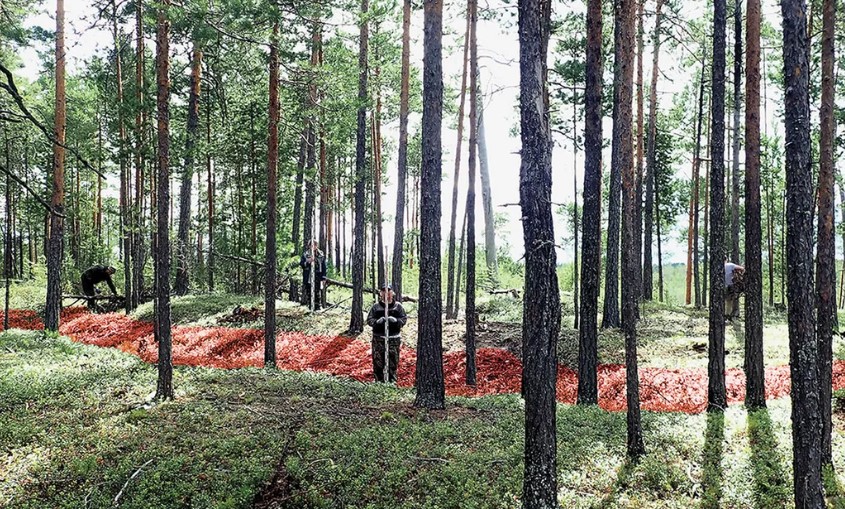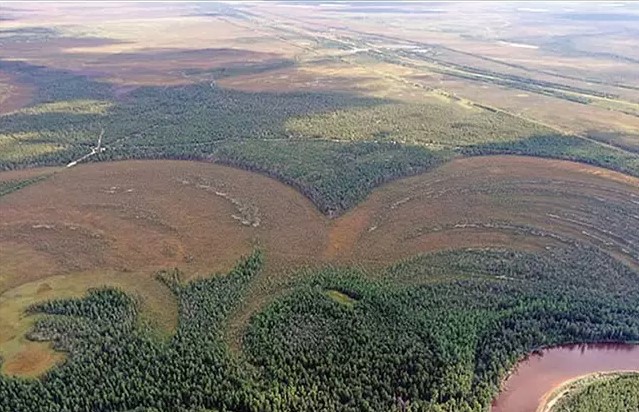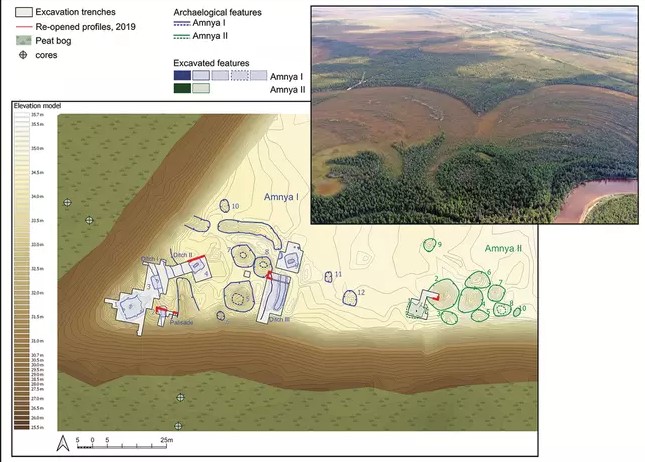Russian archaeologists have discovered an ancient fortress, which could significantly enhance our understanding of early human civilizations
This remarkable find, estimated to be approximately 8,000 years old, provides valuable insights into the complexities of human societies before the widespread adoption of agriculture.
Located in a remote region of Siberia, the fortress, known as Amnya I and II, offers a glimpse into the lives of our ancient ancestors.

Although it may not resemble the grand medieval citadels, the presence of a wooden palisade surrounding the settlement suggests the need for protection against potential threats, whether they were human or wild animals.
Contrary to the prevailing belief that permanent settlements and monumental architecture were only possible with the emergence of agriculture.
The discovery of the Amnya fortress indicates that early human societies were capable of establishing settled communities even before the advent of farming practices.

This raises intriguing questions about the factors that influenced the transition from nomadic lifestyles to more permanent settlements.
Strategically positioned near the Amnya River, the fortress served multiple purposes
Besides providing a water source, the river likely facilitated navigation, simplifying locating the settlement.
Moreover, the proximity to the river would have facilitated fishing activities, ensuring a steady food supply for the inhabitants.
Through meticulous archaeological examinations, including radiocarbon dating, experts from Freie Universität Berlin have confirmed the prehistoric age of the Amnya fortress, making it the world's oldest-known fort.

Further investigations, such as paleobotanical and stratigraphical studies, have revealed that the inhabitants of Western Siberia led a sophisticated lifestyle, skillfully utilizing the abundant resources offered by the surrounding taiga environment.
The discovery of the Amnya fortress demonstrates that early humans could create stable communities based on resource availability, such as hunting and gathering
The fortress likely served as a central hub for hunting expeditions and as a means of food preservation.
While the fortress provided numerous advantages, it also posed challenges.

Concentrating resources and wealth in one location could have attracted the attention of other groups, necessitating defensive measures to protect the inhabitants and their valuable supplies.
The discovery of the Amnya fortress opens up new avenues for understanding the adaptive strategies and societal dynamics of early human communities.
It highlights their resourcefulness and resilience in adapting to their environments, even in the absence of advanced agricultural practices.






